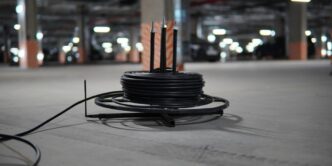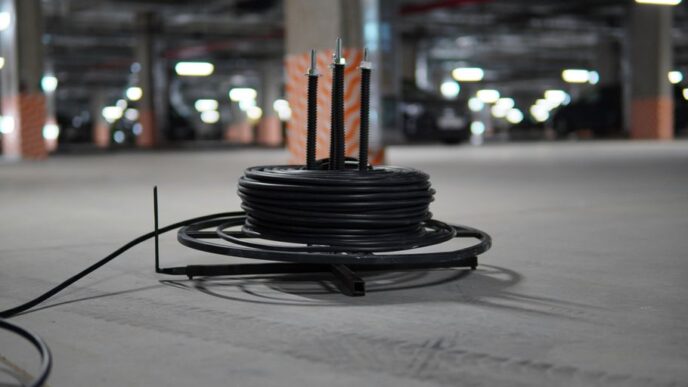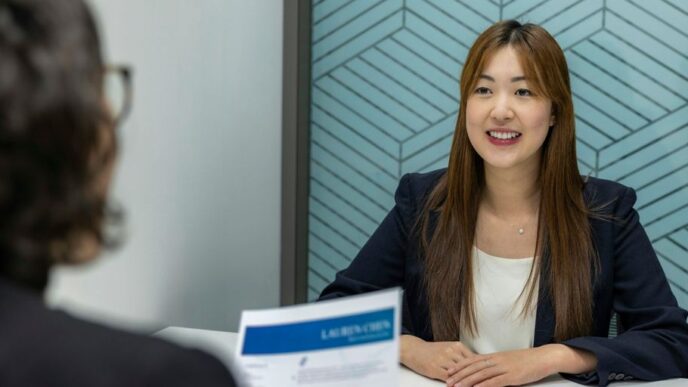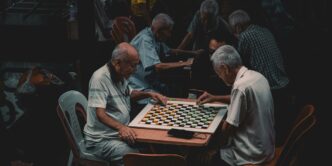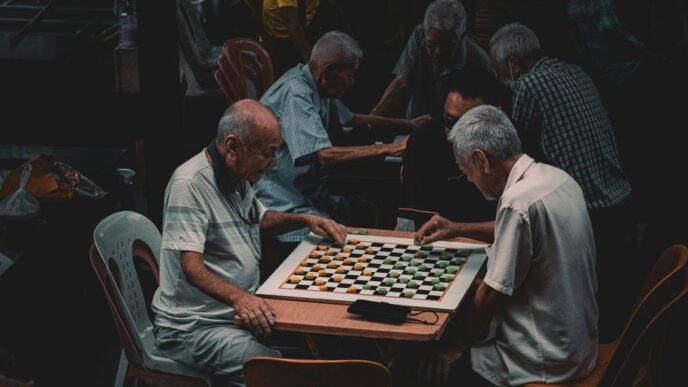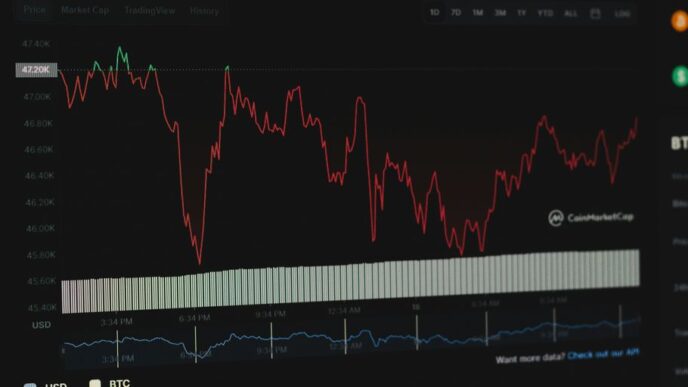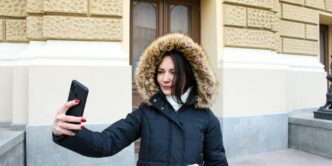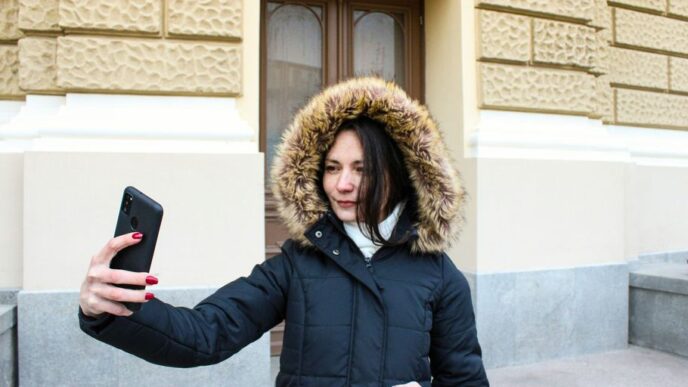Generative AI art is quickly becoming a popular way for digital creators to express their ideas. This new technology allows artists to work alongside AI to make unique and exciting artwork. As more people learn about and use generative AI, it’s changing how we think about creativity and art itself. This article explores the rise of generative AI art, its impact on creative processes, and what the future may hold for artists and audiences alike.
Key Takeaways
- Generative AI art is changing the way artists create and express themselves.
- AI tools can help artists be more productive and explore new ideas.
- Collaboration between humans and AI can lead to exciting new forms of art.
- There are ethical questions about originality and copyright in AI-generated art.
- The future of art may include more AI collaboration, making creativity more accessible to everyone.
The Rise of Generative AI Art
Historical Context and Evolution
Generative AI art has emerged as a fascinating blend of technology and creativity. In recent years, AI has transformed how we create art, allowing artists to explore new possibilities. The journey began with simple algorithms and has evolved into complex systems that can produce stunning visuals.
Key Milestones in AI Art
Several key events have marked the rise of generative AI art:
- 2018: The AI-generated portrait "Edmond de Belamy" sold for $432,500 at Christie’s, showcasing the potential of AI in the art market.
- 2020: The introduction of advanced models like GANs (Generative Adversarial Networks) allowed for more realistic and diverse art creation.
- 2023: AI art competitions began to gain popularity, with AI-generated pieces winning awards, sparking debates about creativity and originality.
Influence on Traditional Art Forms
Generative AI is reshaping traditional art forms in various ways:
- Collaboration: Artists are now collaborating with AI to create unique pieces that blend human creativity with machine precision.
- Accessibility: More people can create art, as AI tools lower the barriers to entry for artistic expression.
- New Styles: AI introduces new styles and techniques, pushing the boundaries of what art can be.
Generative AI art is not just a trend; it represents a significant shift in how we understand creativity and artistic expression.
This evolution highlights the growing importance of human-AI collaboration in the creative process, paving the way for a new era in art.
Impact on Creative Workflows
Boosting Productivity and Efficiency
Generative AI is changing how artists work. It helps them create more in less time. For example:
- Artists can produce up to 50% more artwork after using generative AI.
- Many find that their work is liked more by others, increasing engagement.
- The time spent on repetitive tasks is reduced, allowing for more focus on creativity.
Human-AI Collaboration
The partnership between humans and AI is crucial. Here’s how they work together:
- Idea Generation: Artists use AI to brainstorm new concepts.
- Execution: AI helps in creating the artwork based on those ideas.
- Refinement: Artists select and improve the AI-generated outputs to match their vision.
Challenges and Limitations
While generative AI offers many benefits, it also has some downsides:
- Job Displacement: Some worry that AI might replace human artists.
- Quality Control: Not all AI-generated art meets high standards.
- Creativity Concerns: There are fears that relying too much on AI could limit original thought.
The rise of generative AI in art is a double-edged sword in creative workflows, offering efficiencies and addressing concerns like job displacement, ethics, & human creativity.
Overall, generative AI is reshaping creative workflows, making them more efficient while also raising important questions about the future of art and creativity.
Prominent AI Artists and Influencers
Pioneers in AI Art
Several artists are leading the way in the world of AI art, using technology to create unique pieces. Robbie Barrat and Refik Anadol are two notable figures. Barrat is famous for his AI-generated nude portraits, while Anadol creates immersive installations that blend art and technology.
Influence on Social Media
Influencers play a vital role in promoting AI art. They use platforms like Instagram and Twitter to share their creations and engage with followers. Here are some key activities they undertake:
- Content Creation: Sharing tutorials and reviews of AI art tools.
- Community Engagement: Interacting with fans through live streams and Q&A sessions.
- Collaboration: Working with other artists to push creative boundaries.
Case Studies of Successful AI Artists
Here are a few examples of successful AI artists:
| Artist Name | Notable Work | Medium Used |
|---|---|---|
| Robbie Barrat | AI-generated nude portraits | GANs |
| Refik Anadol | "Melting Memories" | Data Sculptures |
| Sofia Crespo | Biologically-inspired art | GANs |
The rise of AI art is not just about technology; it’s about new forms of expression that challenge our understanding of creativity.
These artists and influencers are reshaping the art world, making it more accessible and inclusive for everyone.
Technological Innovations Driving AI Art

Generative Adversarial Networks (GANs)
Generative Adversarial Networks, or GANs, are a key technology in AI art. They consist of two neural networks: a generator and a discriminator. The generator creates images, while the discriminator evaluates them. This back-and-forth process helps produce realistic images.
- Key Features of GANs:
- Two neural networks working together.
- Continuous improvement through feedback.
- Ability to create unique and diverse artworks.
Neural Style Transfer
Neural Style Transfer is another exciting technique. It allows artists to blend the style of one image with the content of another. This means you can take a famous painting’s style and apply it to a photo, creating something entirely new.
- Benefits of Neural Style Transfer:
- Merges different artistic styles.
- Offers endless creative possibilities.
- Makes art more accessible to everyone.
Text-to-Image Models
Text-to-image models are changing how we create art. These models can generate images based on written descriptions. For example, if you describe a sunset over a mountain, the AI can create a picture that matches your words.
- Advantages of Text-to-Image Models:
- Transforms ideas into visuals.
- Encourages creativity without needing artistic skills.
- Expands the definition of what art can be.
The rise of these technologies is transforming the art world, making it more inclusive and innovative. Artists can now explore new mediums and techniques, pushing the boundaries of creativity.
Conclusion
These technological innovations are not just tools; they are reshaping the landscape of art. As AI continues to evolve, so will the possibilities for artists and creators everywhere. The future of art is bright, and it is being driven by technology.
Ethical and Legal Considerations
Authorship and Originality
The rise of AI art brings up important questions about who really creates the art. When an AI generates a piece, is it the machine, the programmer, or the user who should get credit? This confusion makes it hard to decide who owns the rights to the artwork.
- Key Points:
- AI can create art independently, complicating authorship.
- Originality is questioned since AI learns from existing works.
- Clear guidelines are needed to address these issues.
Copyright Issues
As AI art becomes more popular, the question of copyright becomes crucial. Can someone make money from AI-generated art? This topic is still being explored, and many artists are unsure about their rights.
| Aspect | Current Status | Future Considerations |
|---|---|---|
| Copyright Ownership | Unclear for AI-generated works | Need for updated laws |
| Legal Frameworks | Evolving, but inconsistent | International standards needed |
| Artist Rights | Often overlooked | Greater recognition required |
Societal Implications
The use of AI in art raises questions about its impact on society. How will this technology change the way we view creativity? It’s essential to think about how AI art affects traditional artists and the art community as a whole.
The growth of AI art challenges our understanding of creativity and ownership, urging us to rethink our definitions of art and the artist.
In summary, as generative AI art gains traction, it’s vital to address these ethical and legal considerations to ensure a fair and inclusive environment for all creators.
Future Prospects of Generative AI Art
Emerging Trends
Generative AI art is expected to evolve rapidly, with quick technological advances shaping its future. Here are some trends to watch:
- Increased integration of AI in various art forms.
- More artists collaborating with AI tools to enhance creativity.
- Growth of platforms dedicated to showcasing AI-generated art.
Potential for New Artistic Mediums
As generative AI continues to develop, it opens doors for new artistic mediums. Artists may explore:
- Interactive installations that respond to viewer input.
- AI-generated music and soundscapes.
- Virtual reality experiences that blend AI art with immersive environments.
Long-Term Implications for Creativity
The long-term effects of generative AI on creativity are still unfolding. Some potential outcomes include:
- A shift in how we define originality and authorship in art.
- The possibility of AI becoming a co-creator rather than just a tool.
- Concerns about the saturation of generic content in the art world.
The future of generative AI art is bright, but it requires careful navigation to ensure that human creativity remains at the forefront.
In summary, the landscape of generative AI art is changing rapidly, and it will be exciting to see how artists adapt and innovate in this new environment.
Key highlights include the focus on quick technological advances and the potential for new artistic mediums that could redefine creativity.
Democratization of Art Through AI
The rise of AI technology is transforming the art world, making it easier for everyone to create. This shift is breaking down barriers that once kept many people from expressing their creativity.
Accessibility and Inclusivity
- AI tools allow anyone to create art, regardless of their skill level.
- Platforms like Artbreeder and DeepArt have millions of users, showing how popular AI art has become.
- This trend encourages diverse voices in art, especially from those who may not have access to traditional art education.
Global Community of AI Artists
- The internet has connected artists from all over the world, fostering collaboration and inspiration.
- Artists can share their work easily, leading to a vibrant community.
- Many workshops and online courses are available, helping newcomers learn how to use AI tools effectively.
Impact on Art Education
- AI is changing how art is taught, making it more accessible to students.
- Schools are starting to include AI art tools in their curriculums.
- This new approach encourages students to explore their creativity without the fear of not being skilled enough.
The democratization of art through AI is a significant development that opens up creative opportunities to a wider audience.
In summary, AI is not just a tool; it is a bridge that connects people to art, allowing everyone to participate in the creative process. This shift is reshaping the future of art, making it more inclusive and diverse.
Conclusion
In conclusion, generative AI is changing the way we think about art and creativity. It helps artists create more work and explore new ideas, making art more accessible to everyone. While some worry that AI might take away from human creativity, it actually encourages collaboration between humans and machines. This partnership can lead to exciting new forms of art that we haven’t seen before. As we move forward, it’s important to embrace these changes and find ways to use AI to enhance our creative journeys, rather than replace them.
Frequently Asked Questions
What is generative AI art?
Generative AI art is a type of artwork created using computer programs and algorithms. These tools help artists make unique images, music, or stories by combining different ideas.
How does generative AI help artists?
Generative AI can make artists more productive by giving them new tools to create faster and explore more ideas. It helps them focus on their creativity instead of just the technical parts.
Are there any famous AI artists?
Yes, there are many well-known AI artists who use technology to create amazing pieces of art. Some of them have gained popularity on social media and have even sold their work at auctions.
What are the main technologies behind generative AI art?
Some key technologies include Generative Adversarial Networks (GANs), which create realistic images, and Neural Style Transfer, which blends different art styles together.
What are the ethical issues surrounding AI art?
There are several concerns, including questions about who owns the art created by AI, whether it’s original, and how it affects traditional artists and their work.
What does the future hold for generative AI art?
The future looks bright for generative AI art. It could lead to new artistic styles and forms, making art more accessible to everyone and allowing for more creative exploration.


